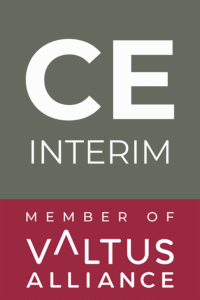¿No tiene tiempo para leer el artículo completo? Escuche el resumen en 2 minutos.
Las recesiones económicas son inevitables, pero no tienen por qué serlo los fracasos empresariales. Cada recesión tiene sus ganadores y sus perdedores: mientras algunas empresas luchan por mantenerse en pie, otras prosperan e incluso crecen. ¿Cuál es la diferencia? Las que sobreviven suelen apoyarse en modelos de negocio a prueba de recesión-modelos diseñados para manejar las tensiones financieras, adaptarse a las condiciones cambiantes y salir fortalecidos.
En este artículo, exploraremos los fundamentos de los modelos de negocio a prueba de recesiones, nos sumergiremos en ejemplos del mundo real y ofreceremos estrategias prácticas para crear una empresa capaz de capear las tormentas económicas.
¿Qué define un modelo de negocio a prueba de recesión?
Cuando las empresas se enfrentan a una recesión, el factor determinante para la supervivencia no es sólo la solidez financiera, sino la capacidad subyacente. modelo de negocio. Las empresas flexibles y adaptables prosperan y siguen obteniendo ingresos incluso cuando las tradicionales pasan apuros durante las caídas del gasto de los consumidores.
Esto es lo que establece modelos de negocio a prueba de recesión aparte del resto:
1. Flujos de ingresos recurrentes y predecibles
Una de las principales características de una empresa a prueba de recesiones es tener ingresos predecibles y estables. Esto suele significar centrarse en modelos que generen ingresos recurrentes. En modelo de negocio basado en suscripciones es un excelente ejemplo de ello. En lugar de depender de ventas puntuales, las empresas con servicios de suscripción pueden confiar en ingresos mensuales constantes que las aísla de caídas repentinas de la demanda.
Toma Spotify o Netflixpor ejemplo. Incluso en tiempos de recesión, los consumidores siguen abonándose a estos servicios porque el valor percibido sigue siendo alto en relación con el coste.
Lo bueno de este modelo es su estabilidad: en tiempos de crisis económica, los consumidores son más propensos a cancelar los grandes gastos, pero a menudo se aferran a pequeños servicios recurrentes que valoran.
2. Gran demanda de productos esenciales
Las empresas que se centran en lo esencial-productos o servicios sin los que la gente no puede vivir- son intrínsecamente más resistentes a la recesión. Tiendas de comestibles, profesionales sanitariosy empresas de servicios públicos históricamente han funcionado bien durante las recesiones. Pero incluso si su negocio no entra de forma natural en estas categorías, es posible reposicionar su oferta para satisfacer las necesidades esenciales.
Por ejemplo, durante la pandemia de COVID-19, empresas de sectores como entrega a domicilio, equipo de protección individualy tecnología de trabajo a distancia se adaptaron rápidamente a las nuevas demandas de los consumidores. Al orientarse hacia servicios esenciales, empresas que de otro modo habrían tenido dificultades encontraron nuevas formas de prosperar.
3. Flexibilidad financiera y gran liquidez
Tener un sólido balance es otra característica fundamental de las empresas a prueba de recesión. Las empresas con un endeudamiento mínimo, amplias reservas de efectivo y flexibilidad financiera puede gestionar las interrupciones temporales de los ingresos sin hacer recortes drásticos que podrían perjudicar las perspectivas a largo plazo.
Las empresas europeas suelen ser más conservadoras en su enfoque de la financiación, manteniendo operaciones más ágiles y menos obligaciones que sus homólogos estadounidenses. Al evitar un apalancamiento excesivo y mantener bajos los costes operativos, conservan la flexibilidad para pivotar rápidamente cuando cambian las condiciones económicas.
Toma IKEA como ejemplo. El gigante sueco prospera en las recesiones gracias a su modelo económico, su eficiente cadena de suministro y la escalabilidad de sus operaciones.
Diversificación: Repartir el riesgo para aumentar la resistencia
La diversificación es un elemento esencial de estrategia a prueba de recesiones. Al repartir el riesgo entre distintas fuentes de ingresos, sectores o regiones, las empresas pueden protegerse de la recesión en un área concreta.
1. Ampliar las fuentes de ingresos
Una empresa que depende de una única fuente de ingresos es vulnerable a los choques externos. Una de las mejores formas de a prueba de recesión es ampliar las fuentes de ingresos. Esto podría implicar ofrecer nuevos productos, servicios o entrar en diferentes segmentos del mercado.
Amazon es un caso ejemplar de diversificación de ingresos. Tras empezar como librería en línea, se ha expandido a ámbitos como computación en nube (AWS)(Amazon Prime) y logística. Cada uno de estos sectores experimenta ciclos económicos diferentes, lo que permite a Amazon seguir siendo rentable incluso cuando el gasto de los consumidores en un sector cae.
Para las pequeñas empresas, la diversificación puede significar añadir servicios complementarios o crear nuevos canales de venta como plataformas digitales o nuevos mercados.
2. Diversificación geográfica
Operar en varias regiones reduce la exposición a los ciclos económicos de un solo país. NestléPor ejemplo, con sus operaciones en Europa, Asia y América, puede contrarrestar la desaceleración en una región aprovechando el crecimiento en otra.
Este diversificación geográfica permite a las empresas acceder tanto a los mercados estables como a los emergentes, equilibrando el riesgo.
En Europa, las empresas que se expanden por el continente pueden beneficiarse de los variados panoramas económicos de la UE. Mientras que los países de Europa Occidental pueden experimentar desaceleraciones, los mercados de Europa Oriental suelen presentar oportunidades de crecimiento. Esta dispersión geográfica puede marcar la diferencia en resistencia a la recesión.
3. Diversificación de los segmentos de clientes
Servir a una clientela diversa también añade una capa de protección. Las empresas que atienden tanto a mercados de lujo y consumidores conscientes de su presupuesto tienen más flexibilidad para cambiar su enfoque durante las recesiones económicas.
Por ejemplo, durante la crisis financiera de 2008, minoristas de descuento como Aldi y Lidl experimentó un aumento significativo de clientes que buscaban alternativas asequibles a los supermercados tradicionales.
Ofreciendo productos o servicios a precios diferentes o dirigiéndolos a grupos específicos. datos demográficos de los nuevos clientesEn tiempos de turbulencias, las empresas pueden crear más oportunidades de estabilidad.
Transformación digital: Imprescindible para afrontar la recesión
Si hay una tendencia que ha transformado los negocios en las dos últimas décadas, esa es transformación digital. Las empresas que han adoptado tecnología-ya sea mediante la automatización, la computación en nube o la toma de decisiones basada en datos- son mucho más ágiles y capaces de adaptarse durante las recesiones económicas.
Exploremos cómo las empresas pueden aprovechar las herramientas digitales para a prueba de recesión sus operaciones.
1. Automatización de las operaciones
La automatización se ha convertido en una de las herramientas más poderosas del arsenal de una empresa a prueba de recesiones. Mediante la automatización de tareas repetitivas -ya sea en fabricación, atención al cliente o logística-, las empresas pueden reducir considerablemente los costes sin merma de la producción.
Los fabricantes europeos, por ejemplo, llevan mucho tiempo liderando la adopción de automatización robótica de procesos (RPA) y fábricas inteligentes. Estos avances reducen la dependencia de la mano de obra humana para tareas rutinarias, disminuyen los costes operativos y mejoran la eficiencia. Para las empresas que se enfrentan a una posible desaceleración económica, este tipo de flexibilidad operativa tiene un valor incalculable.
Cuando surgen cambios operativos repentinos o lagunas en el liderazgo, las empresas suelen recurrir a CE InterinoCE Interim es una empresa especializada en la gestión provisional transcultural. Con una amplia experiencia en gestión de crisis y recuperación en toda Europa, CE Interim ofrece soluciones inmediatas de liderazgoGarantizar la continuidad y estabilidad operativas en tiempos turbulentos.
2. Aprovechar la computación en nube y los modelos SaaS
Computación en nube y Software como servicio (SaaS) se han convertido en parte integrante de las empresas que necesitan ampliar o reducir su escala con rapidez. La flexibilidad que ofrecen los servicios en la nube significa que las empresas no necesitan invertir en infraestructuras costosas: pagan por lo que utilizan, lo que hace que la estructura de costes sea más rentable. variable en lugar de fijo.
Por ejemplo, las empresas que utilizan AWS o Microsoft Azure pueden ajustar sin problemas sus necesidades informáticas en función de la demanda sin preocuparse por costosas inversiones de capital. Esta escalabilidad no sólo garantiza la eficiencia operativa, sino también rentabilidad durante los periodos lentos.
3. Comercio electrónico y canales de venta digitales
Durante las recesiones, las empresas capacidades de comercio electrónico tienen una ventaja significativa. A medida que los hábitos de consumo se orientan hacia las compras en línea, las empresas que han invertido en plataformas digitales están mejor posicionadas para captar ese mercado.
Incluso las empresas tradicionales pueden a prueba de recesión creando una sólida presencia en línea.
La pandemia puso de relieve esta ventaja. Los minoristas con una infraestructura de comercio electrónico consolidada pudieron adaptarse mucho más rápido que los que dependían de las ventas en persona. Este cambio ha llegado para quedarse, y las empresas deben seguir transformar digitalmente para seguir siendo competitivos.
Modelos empresariales sostenibles: Pensar a largo plazo para resistir a la recesión
La sostenibilidad no es sólo una palabra de moda; se está convirtiendo en un imperativo empresarial, sobre todo en Europa, donde los consumidores se preocupan cada vez más por la sostenibilidad. impacto medioambiental y responsabilidad social. Pero más allá de las consideraciones éticas, la sostenibilidad ofrece una ventaja práctica a la hora de construir un negocio a prueba de recesiones.
1. Modelos empresariales éticos y respetuosos con el medio ambiente
Modelos empresariales sostenibles, centrados en creación de valor a largo plazoLas empresas que priorizan el abastecimiento ético, el bajo impacto medioambiental y las prácticas laborales justas obtienen mejores resultados que las demás durante las recesiones. Las empresas que priorizan el abastecimiento ético, el bajo impacto medioambiental y las prácticas laborales justas disfrutan de mayores fidelización de clientesincluso cuando disminuye la renta disponible.
PatagoniaPatagonia, por ejemplo, ha creado un negocio muy resistente gracias a su compromiso con el activismo medioambiental y los productos sostenibles. Al animar a los clientes a comprar menos pero de calidad, Patagonia alinea sus prácticas empresariales con los valores de sus clientes, construyendo una marca a prueba de recesiones que prospera tanto en los buenos como en los malos tiempos.
2. Adaptación a los cambios normativos
Las empresas centradas en la sostenibilidad también se adaptan mejor a los cambios. entornos normativossobre todo en Europa, donde los gobiernos exigen cada vez más prácticas más ecológicas. Las empresas que se adaptan pronto a estas normativas tienen menos probabilidades de sufrir trastornos en el futuro y más posibilidades de conseguir financiación o inversiones orientadas al crecimiento sostenible.
Ejemplos de empresas de éxito a prueba de recesión
Varias empresas de distintos sectores han demostrado el poder de modelos a prueba de recesión. Estas empresas aprovecharon estrategias inteligentes, la diversificación y la innovación para seguir siendo rentables durante las recesiones.
1. Apple: Innovar en tiempos de recesión
El modelo de negocio de Apple se basa en la innovación continua, precios superiores y fuentes de ingresos diversificadas. Durante las recesiones económicas, Apple no baja los precios, sino que se centra en crear productos deseables que los consumidores estén dispuestos a comprar, haya recesión o no. Esta estrategia, combinada con su sólido ecosistema de dispositivos y servicios, ayuda a la empresa a mantener la rentabilidad incluso cuando el gasto discrecional se reduce.
2. Costco: Suscripción y escala
Costco modelo de afiliación es un buen ejemplo de cómo hacer frente a la recesión mediante ingresos por suscripciones. Con millones de socios fieles que pagan cuotas anuales, Costco disfruta de unos ingresos constantes independientemente de las condiciones del mercado. Su apuesta por compras al por mayor y precios reducidos atrae a consumidores preocupados por los costes durante las desaceleraciones económicas, lo que le ayuda a prosperar incluso en las recesiones.
3. Proveedores sanitarios: Demanda inelástica
La sanidad es posiblemente el sector más resistente a la recesión. Sean cuales sean las condiciones económicas, la gente siempre necesitará atención médica. TelemedicinaLos servicios de atención domiciliaria y los productos farmacéuticos son sectores especialmente resistentes, ya que la demanda de estos servicios suele aumentar durante las recesiones económicas, cuando la gente es más consciente de su salud.
Cómo crear una empresa a prueba de recesiones
Construir un negocio a prueba de recesiones no consiste sólo en reaccionar ante las recesiones económicas, sino en prepararse para ellas. He aquí estrategias prácticas para un negocio a prueba de recesiones:
1. Crear fuentes de ingresos resistentes
El paso más importante es crear flujos de ingresos que sean coherente y previsible. Considere la posibilidad de ofrecer servicios de suscripcióncrear programas de fidelización o introducir modelos de precios diferenciados que atraen a distintos segmentos de clientes.
2. Centrarse en el control de costes
Mantener la flexibilidad en su estructura de costes es esencial. Invierta en automatización y herramientas digitales para reducir la dependencia de la mano de obra humana y aumentar la eficiencia. Asegúrese de que su base de costes es lean suficiente para capear las caídas de ingresos a corto plazo sin dañar las perspectivas a largo plazo.
Las empresas que se enfrentan al reto de ajustar su estructura de costes o sustituir rápidamente a sus directivos suelen recurrir a CE Interino.
Con más de una década de experiencia en gestión de cambios y recuperación de crisisCE Interim proporciona a las empresas ejecutivos interinos con experiencia para gestionar transiciones críticas y mantener la continuidad de la empresa en tiempos difíciles.
3. Innovar continuamente
Innovar durante una recesión no tiene por qué significar una transformación radical, pero sí requiere adaptando. Escuchar las opiniones de los clientes, observar las tendencias del mercado y hacer mejoras graduales que aportan valor incluso en tiempos difíciles. Las empresas que siguen innovando y evolucionando están mejor posicionadas para salir reforzadas de una recesión.
Conclusión: Crear una empresa que prospere en cualquier economía
La clave para crear un negocio a prueba de recesiones no es sólo sobrevivir a la recesión, sino construir un modelo que permita crecimiento e innovación incluso en tiempos económicos difíciles. Al centrarse en flujos de ingresos previsiblesabrazando transformación digitaldiversificando su base de clientes y manteniéndose ágil, su empresa puede prosperar con independencia de la coyuntura económica.
Recuerde que las recesiones van y vienen, pero las empresas que se construido para resistir resistirán el paso del tiempo. Ahora es el momento de prepararse, invertir en prácticas sostenibles y asegurarse de que su empresa está en condiciones de triunfar en cualquier entorno económico.





